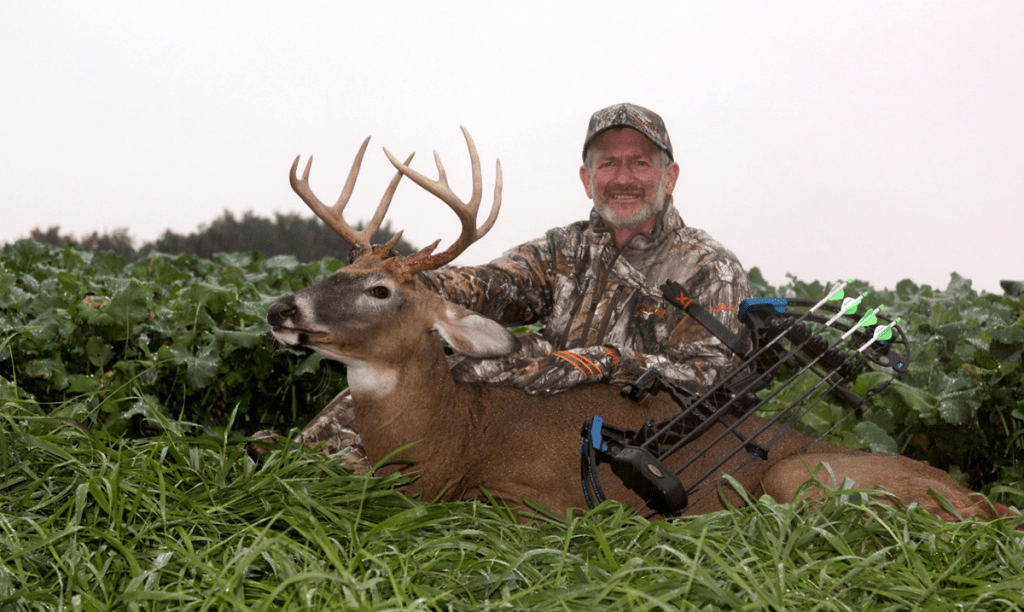
10 Tips for Early Season Whitetail Success
You don’t have to wait for the rut to punch your tag.
By Bob Robb
The rut is like a religious experience for many dyed-in-the-wool whitetail hunters, and it truly is a magical time. But I’ve also found that the early season, while bucks are still bachelored up, the weather’s nice, and there’s been little hunting pressure, can also be a great time to fill your tag.
Hunting the early season requires different tactics than hunting the rut or later. Here are my top 10 tips for early season whitetail success.
1. Know the Deer
To consistently connect on a mature buck during the early season, you have to know exactly where he beds during the day, where he feeds at night and how he gets there and back. Recognizing the natural lay of the land and both quality feeding and bedding areas is the first step. To increase your odds, mineral licks, waterholes and mock scrapes can all be used to make sure that the patterns you’re hunting are established early, often and consistently throughout the entire hunting season.
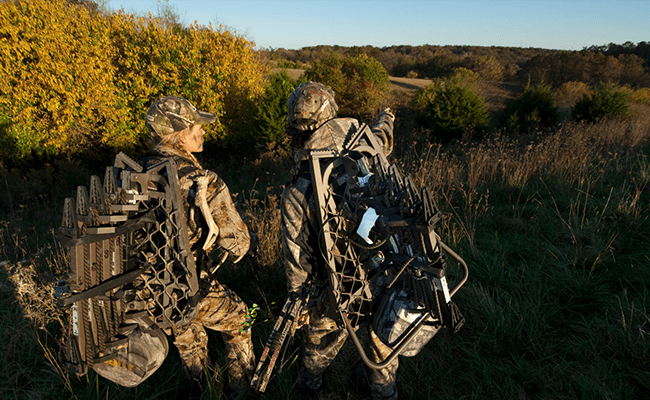
A flexible strategy that allows you to hunt where the deer are feeding at the moment is key.
Recognize that the deer herd will be in constant flux now, moving as food sources change. Thus, having a mobile hunting strategy is important. Fixed stands may be the answer if you’re hunting a funnel during the rut, but the only way to zero in on the food source of the moment is to monitor the deer herd, then grab a lightweight hang-on stand and carefully set up on the hot sign.
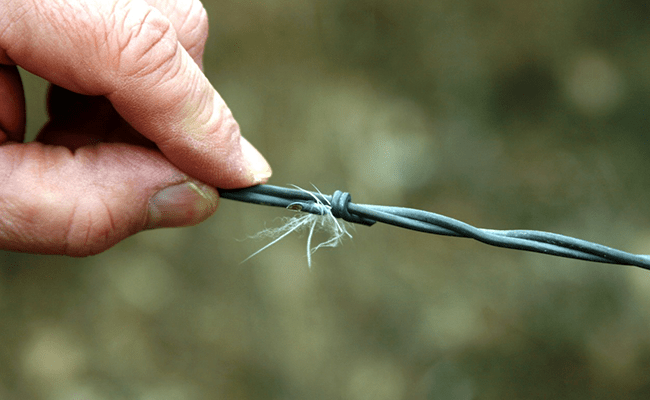
Scouting on the ground will show you the trails deer are using, where they cross fences, and other movement patterns.
Spending time with your binocular from afar at first and last light is an excellent, no-pressure way to help put the deer-movement puzzle pieces together. Glass the edges of major food sources (crop fields in farm country, clear cuts in the big woods) the last hour or two of the day to get the most recent intel.
2. Smile for the Camera
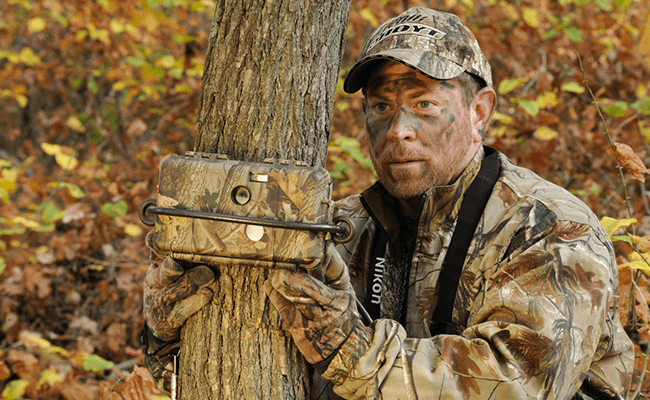
Trail cameras are an important part of any scouting strategy and especially important during the early season.
Game cameras play a crucial role in early-season hunting. Pay close attention to the date and time stamps in pictures where deer appear and analyze what has them in that spot at that time. You can use your cameras to hone-in on where deer are entering specific fields, and that will help to learn where they are most likely bedding; in the early part of season, that usually isn’t far from their primary food source. With that knowledge in hand, you can better position your ambush point and figure out how to strategically access and exit that spot to minimize hunting pressure.
3. Silence is Golden
If your treestand creaks, pings, pops or squeaks, get it fixed before setting it up. Your stand location will probably be near a bedding thicket, and the last thing you want to do is announce to the world that you have arrived as you climb into a noisy stand.
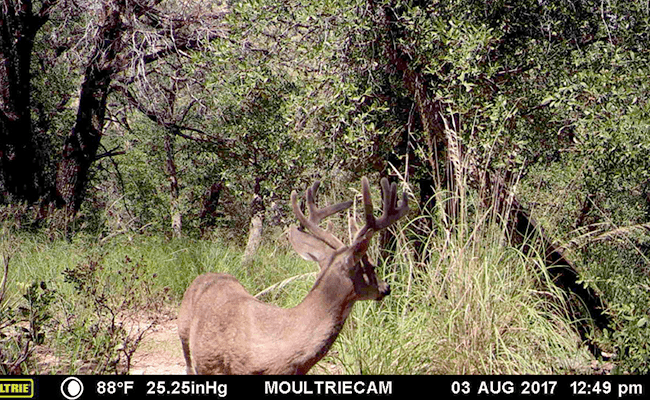
Hunting near bedding thickets can be very productive, especially when bucks are still in velvet early in the season.
4. Bug Out
Early season hunting can be a time of hot, muggy weather and lots of biting insects. If you’re swatting at them, you can’t stay still and quiet. A Thermacell can keep bitey things at bay without the deer-spooking smell of insect repellents. I sometimes bring two.
5.The Downwind Side
We all know you need to keep deer upwind of your stand. The trouble is, during the early seasons, if you’re sitting near a primary food source, you’ll more than likely have does and young bucks walk past your stand before a mature buck arrives, usually at very last light. That means you have to have your scent cone blowing into a non-deer area. My favorite deerless areas are steep terrain features, waterways, roads, houses, open fields and mature, open forests.
6. Scout the Acorn Drop
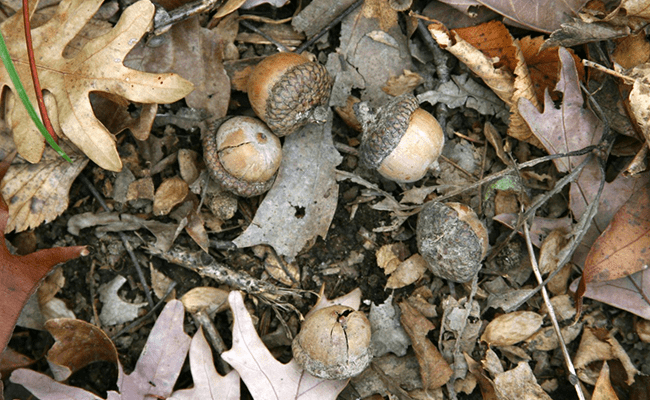
When mast crops become available, deer will leave food plots to attack them. Be prepared to move your setup when this happens.
We tend to get a little obsessed with our food plots because, after all, we planted and nurtured them for months. Deer love them, but they’re not married to them, especially when mast crops start falling. The early season is prime time for the white oak acorn drop, as well as soft-mast foods like persimmons and apples. Find them, because when they become available, deer will leave food plots and concentrate on these resources like kids in a candy store.
7. Scent Control
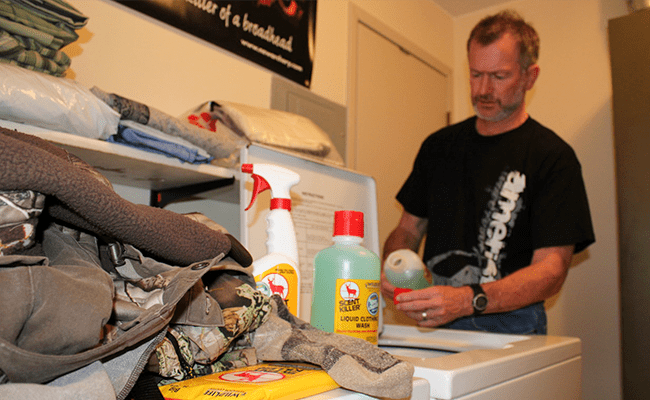
Following a meticulous scent-control strategy includes washing clothing in a scent-eliminating detergent.
Warm weather makes us sweat, which makes us stink. To mitigate human odor, dress in lightweight clothing, don’t add layers until you’re at your stand to avoid sweating while walking in, shower using scent-eliminating soaps and shampoo, spray down all clothing and gear with a scent-eliminating spray (I continually spray myself down during a stand sit), and use an ozone-emitting clothing bag to kill odors on clothing, boots and gear before the hunt.
8. Watch the Weather
Once you have your deer scouted and stands set, monitor the forecast closely for sudden weather changes. Both warm and cold fronts move deer. Smartphone apps make it possible to stay in tune 24/7. Both The Weather Channel and Weather Underground are reliable weather resources. During the early season, deer generally fall into nocturnal feeding patterns during lengthy periods of warmer temperatures. When a cold snap is on the way, deer sense the barometric change and get on their feet earlier.
In my experience, and there’s research to back this up, no other aspect of the weather has as big an influence on deer movement as barometric pressure. That’s why you see increased daylight movement when a storm front is approaching. The best time to be afield is as a weather front is either moving in or leaving—indicated by a falling or rising barometer—with the approaching storm front the very best time to be on stand. Studies have shown that whitetails seem to move most when the barometric pressure is between 29.90 and 30.30 inches, with the best movement occurring at the higher end of that range, around 30.10 to 30.30 inches.
9. Pick Your Spots

Knowing how the deer use your hunting property—where they bed, water and eat and how they get from one place to the other— will let you set up a killer stand.
The thing about the early season is, you still have a lot of time, often months, of deer season left if you don’t tag out. So, don’t hunt on days when the conditions aren’t right. If it’s hot and windy, chance spooking deer in a marginal day? It’s better to wait for conditions to improve.
10. Sleep In
During the early season, I rarely, if ever, hunt mornings, especially if my focus is on a food source. The exception is if I can get to a morning stand with zero chance of adversely affecting the evening hunt; the chances of spooking deer in the dark as you travel to a morning stand are extremely high. However, after sitting all day away from high-quality food sources, all deer can generally be counted on to move to their evening food sources like clockwork. If you can hunt a morning stand without hindering a high-quality evening hunt, then by all means, go for it. But during the early muzzleloader (and archery) seasons, you should never risk a low-value morning sit at the expense if a high-value evening sit.
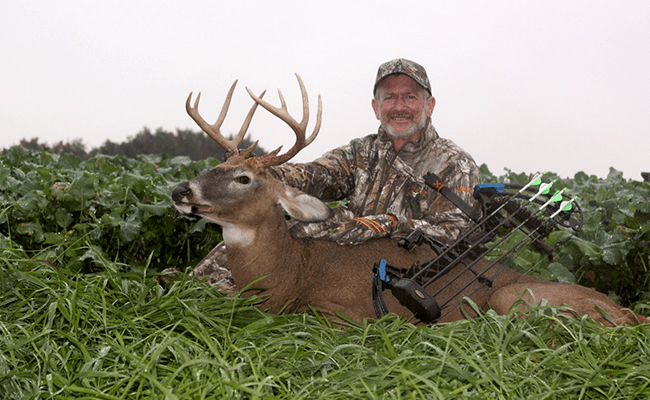
An evening sit on a big food plot produced this nice buck for the author.
One caution about those evening sits. Since the last hour of daylight can be a magical time, hanging in there until last legal shooting light is critical. But that can make getting out of your stand without spooking deer almost impossible. If you're on a crop field, consider having a buddy pick you up in a vehicle or tractor. Deer are usually familiar with farm equipment and less likely to run off to parts unknown when they hear it. I’ve even sat in my stand for two hours after dark, waiting for deer to move off. It’s a pain in the petunias, but critical to long-term success.
















